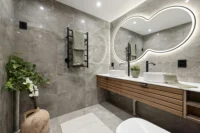- Home
- Articles
- Architectural Portfolio
- Architectral Presentation
- Inspirational Stories
- Architecture News
- Visualization
- BIM Industry
- Facade Design
- Parametric Design
- Career
- Landscape Architecture
- Construction
- Artificial Intelligence
- Sketching
- Design Softwares
- Diagrams
- Writing
- Architectural Tips
- Sustainability
- Courses
- Concept
- Technology
- History & Heritage
- Future of Architecture
- Guides & How-To
- Art & Culture
- Projects
- Interior Design
- Competitions
- Jobs
- Store
- Tools
- More
- Home
- Articles
- Architectural Portfolio
- Architectral Presentation
- Inspirational Stories
- Architecture News
- Visualization
- BIM Industry
- Facade Design
- Parametric Design
- Career
- Landscape Architecture
- Construction
- Artificial Intelligence
- Sketching
- Design Softwares
- Diagrams
- Writing
- Architectural Tips
- Sustainability
- Courses
- Concept
- Technology
- History & Heritage
- Future of Architecture
- Guides & How-To
- Art & Culture
- Projects
- Interior Design
- Competitions
- Jobs
- Store
- Tools
- More
The Importance of Light in Architectural Design: Enhancing Spaces and Well-Being
Discover the transformative power of light in architectural design. This article explores how both natural and artificial lighting shape our experience of space, enhance aesthetics, and influence mood and well-being. Learn the importance of strategic placement, material choices, and layered lighting techniques that optimize environments.

Light isn’t just a tool in architectural design; it’s an essential element that shapes our experience of space. From the soft glow of natural daylight filtering through large windows to the dramatic effects of artificial lighting, the way we use light can transform a simple structure into a breathtaking environment. It enhances aesthetics, influences mood, and even impacts our well-being.
As we explore the interplay between light and architecture, we’ll uncover how thoughtful illumination can highlight design features, create focal points, and guide movement through a space. Understanding the principles of light in architectural design allows us to appreciate not just the buildings we inhabit but also the emotional connections we forge within them. Join us as we delve into the transformative power of light and its role in shaping our built environment.

Table of Contents
ToggleImportance of Light in Architectural Design
Light serves as a critical component in architectural design, influencing aesthetics and user experience. Understanding both natural and artificial light helps us create engaging and functional spaces.

Natural Light
Natural light fundamentally shapes architectural spaces. It provides warmth and beauty while reducing energy consumption. Incorporating large windows, skylights, and light tubes enhances daylight penetration, promoting a connection with the outside world. This accessibility to daylight contributes to our well-being by regulating circadian rhythms and improving mood. Structures that optimize natural light often feature design elements that reflect and diffuse sunlight, enhancing visual comfort and reducing glare. For instance, open floor plans or strategically placed clerestory windows allow light to permeate deeper into spaces.
Artificial Light
Artificial light complements natural light, enabling functionality after sunset. It offers versatility in setting the atmosphere and accentuating design elements. We implement layered lighting techniques, such as ambient, task, and accent lighting, to create dynamic environments. Ambient lighting provides overall illumination, while task lighting focuses on specific activities. Accent lighting highlights architectural features or artwork, drawing attention to key areas. Control systems, such as dimmers and smart technology, further enhance the adaptability of artificial illumination, allowing us to tailor lighting conditions to various occasions and preferences. Proper artificial lighting design enhances safety, facilitates movement, and contributes to the overall aesthetic appeal of a space.
Types of Light Used in Architectural Design
In architectural design, various types of light create distinct effects and enhance the atmosphere within a space. Understanding these types helps optimize lighting strategies for functionality and aesthetics.

Ambient Light
Ambient light serves as the primary source of illumination in a space, providing a comfortable overall level of brightness. This type of lighting comes from various sources, such as ceiling fixtures, wall sconces, or natural light from windows. We use ambient lighting to ensure areas remain usable and inviting. When we incorporate features like large windows or light-colored walls, we can enhance the ambient light, reducing the need for artificial sources during the day.
Task Light
Task light focuses on specific areas to facilitate activities that require additional brightness, such as reading or cooking. We deploy task lighting in various forms, including desk lamps, under-cabinet lighting, or pendant fixtures over workspaces. By strategically placing these light sources, we enable clarity and precision in functional areas, improving productivity and safety. Using adjustable fixtures allows us to tailor the light intensity according to the required task, ensuring optimal visibility.
Accent Light
Accent light highlights particular architectural features or artwork, adding drama and depth to the environment. We employ accent lighting through spotlights, wall-mounted fixtures, or track lighting to draw attention to focal points within a design. This type of light enhances visual interest and can create mood or atmosphere. Utilizing dimmers with accent lights lets us modify their impact and adapt to various occasions, enriching our experience of the space.
Strategies for Incorporating Light in Design
Effective incorporation of light in design enhances our experience in architectural spaces. We focus on strategies like orientation, placement, and material choices to optimize both natural and artificial lighting.

Orientation and Placement
Positioning buildings properly relative to the sun maximizes natural light penetration, improving energy efficiency. We orient windows and openings toward the south to capture sunlight throughout the day while minimizing heat loss at night. Moreover, strategic placement of overhangs and shading devices protects against excessive glare. Aligning spaces that require light, such as living rooms and workspaces, with optimal sunlight exposure promotes well-being and productivity. Taking surrounding landscapes into account helps guide decisions on orientation, ensuring our designs harmonize with the environment.
Material Choices
Selecting materials influences light absorption and reflection within architectural spaces. We prefer lighter-colored materials for walls and ceilings, as they reflect more natural light, brightening interiors and enhancing ambiance. Glass, used extensively in windows and facades, promotes transparency and invites daylight indoors. Utilizing translucent materials can diffuse harsh direct sunlight while maintaining visual connections to the outdoors. Additionally, incorporating reflective surfaces in flooring or furnishings amplifies ambient light, creating a sense of spaciousness and enhancing aesthetic appeal. By carefully choosing materials, we optimize the interplay between light and space to enhance the overall design experience.
Impact of Light on Space Perception
Light profoundly influences space perception, enhancing our emotional and psychological experiences within built environments. Understanding its effects on mood, atmosphere, and visual comfort allows us to create spaces that resonate more deeply with occupants.

Mood and Atmosphere
Lighting significantly affects mood and atmosphere in architectural design. Warm light cultivates a cozy, inviting environment, while cooler light can evoke a more energetic feel. We blend different lighting types—ambient, task, and accent—to create layers that enhance the intended mood. For example, a soft glow from pendant lights can set a relaxed tone in dining areas, whereas bright task lighting in a kitchen promotes alertness and focus. Additionally, when we utilize natural light, it not only brings warmth but also fosters a connection to the outdoors, enhancing feelings of well-being and tranquility.
Visual Comfort
Visual comfort is crucial for a pleasant spatial experience. We prioritize lighting designs that minimize glare and harsh contrasts to promote ease for the eyes. Utilizing diffused natural light or strategically placed artificial light sources helps achieve a balanced illumination level. Proper integration of window treatments further controls the amount of light entering a space, ensuring comfort throughout the day. Additionally, we aim to provide adequate task lighting in workspaces to reduce eye strain and facilitate productivity. By adequately addressing these aspects, we create environments that support both functionality and comfort.
Conclusion
We understand that light is a foundational element in architectural design, profoundly shaping how we interact with spaces. The integration of natural and artificial lighting enhances aesthetic appeal and supports mood and well-being. It’s not just about visibility; it’s about creating environments where individuals feel comfortable and energized.
Natural light optimizes energy efficiency through strategic design, such as incorporating large windows and skylights. These choices foster a connection with the outdoors and help regulate natural biological rhythms. In contrast, artificial lighting provides versatility and control, allowing us to create specific atmospheres tailored to activities and preferences.
The various types of lighting, including ambient, task, and accent, each serve unique purposes. By optimizing these sources, we enhance usability and create emotional spaces. Understanding the impact of light on spatial perception enables us to design environments that foster positive experiences.
Our strategies for design, including careful orientation, strategic placement of openings, and material selection, further refine how light interacts with architecture. We prioritize visual comfort and ambient quality, minimizing glare while maximizing the benefits of both natural and artificial illumination.
By harnessing the power of light, we enrich architectural experiences, driving home its critical role in design that is both functional and aesthetically pleasing. Thoughtful lighting design balances beauty and practicality, creating spaces that resonate with emotional depth and practical usability.
- architectural illumination
- architectural light and space
- architectural lighting design
- architectural lighting solutions
- creative lighting in architecture
- daylighting in architectural design
- enhancing spaces with lighting
- functional light in design
- impact of lighting on architecture
- importance of light in architecture
- integrated lighting design
- light and well-being in design
- light as a design element
- light in interior design
- lighting design for well-being
- lighting for enhanced well-being
- lighting solutions for architecture
- modern lighting design
- Natural Light in Architecture
- sustainable lighting in architecture
Submit your architectural projects
Follow these steps for submission your project. Submission FormLatest Posts
Essential Architecture Tools in 2026: Software, AI, and Physical Equipment
Architecture in 2026 demands more than design talent alone. From BIM and...
Light of Tomorrow by VELUX 2026
This competition encourages architects to design visionary spaces where natural light drives...
Top 10 Online Platforms to Find Apartments for Rent in San Antonio
San Antonio, Texas, with its vibrant culture, historical landmarks, and strong job...
Useful Tips for Planning A Backyard Layout That Feels Spacious
Creating a backyard that feels spacious can transform your outdoor experience, making...












Leave a comment